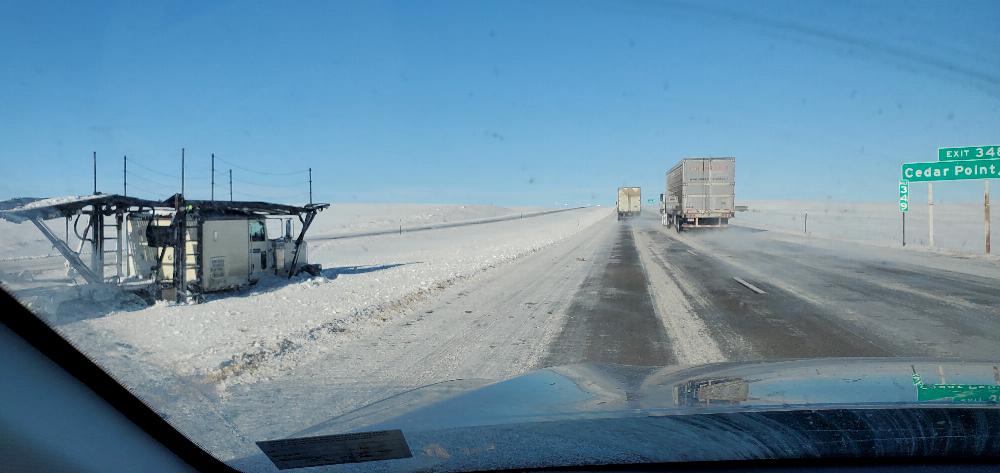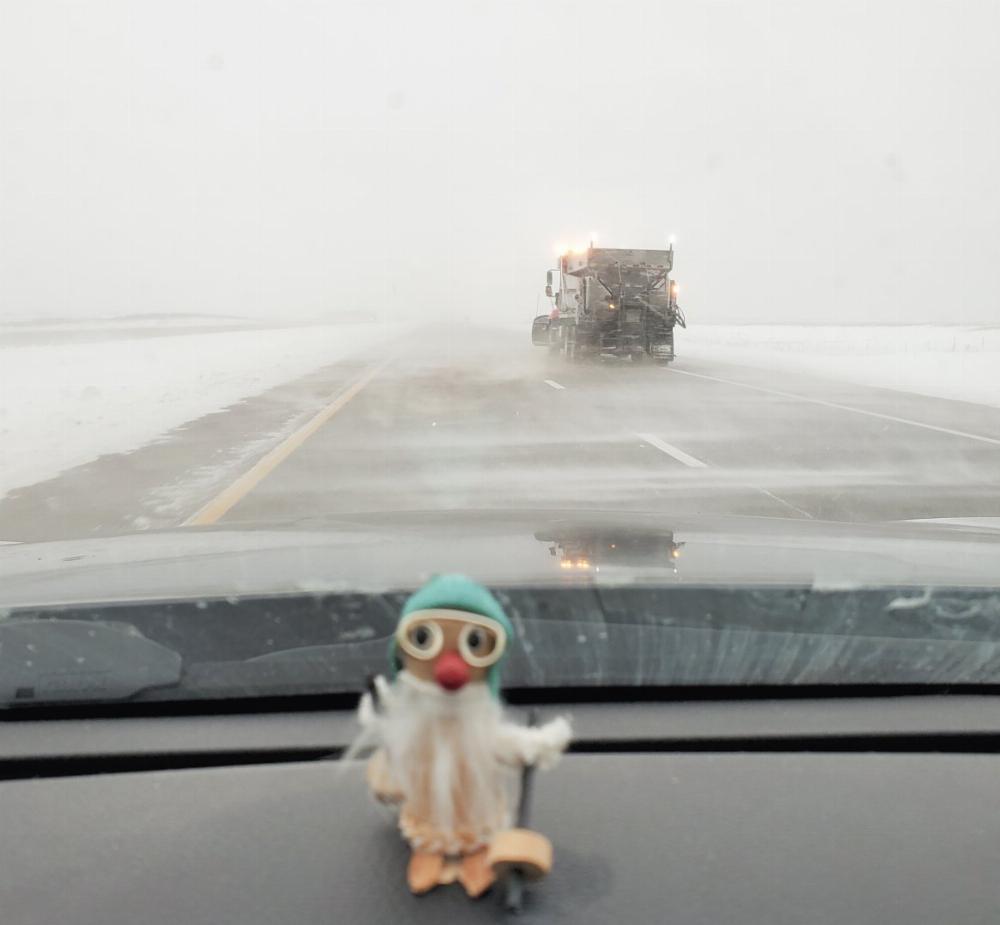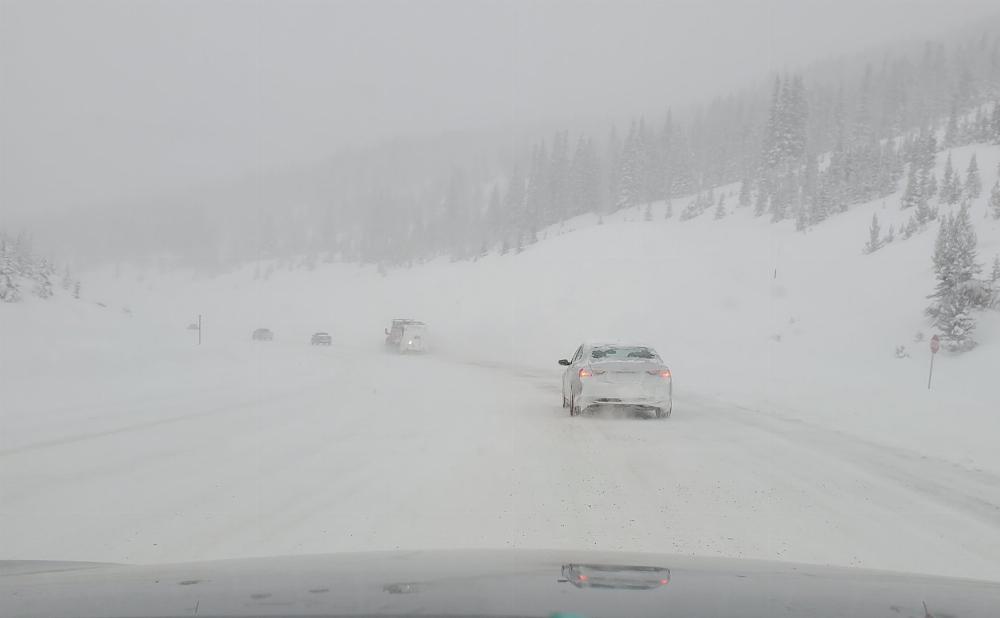
A potential snowstorm is brewing for later this week, which might bring measurable snow across the Mid-Atlantic region — perhaps a foot or more in mountain regions. A good snowstorm can drive many skiers and snowboarders to visit their favorite resorts — and to do that, they must drive to the mountains. Since the Mid-Atlantic region doesn’t experience snowstorms too often, we thought we’d refresh you on some tips for driving safely in the snow, in case you encounter snowy roads in your pursuit of some turns.
Check road conditions and weather. Before heading out, be sure to check current road conditions from your house all the way to the ski area, and check the weather forecast so you know what precipitation might be on the way. While Interstates and major roads are usually in good condition, the last few miles of back roads to a ski resort can be treacherous. There tends to be more snow at higher elevations, so conditions can deteriorate noticeably as you near the resort.
Check your tires. Out west (where the mountains are a tad taller), many skiers swap out their summer tires for grippier winter tires. That Fall tradition isn’t common here, so you’re unlikely to have a set of winter tires in your garage. But your car will do much better in the snow if it has all-season tires. If you aren’t sure, check your tire’s sidewall markings. All-season tires are usually marked with “M+S” (standing for Mud and Snow), or the words “All-Season.” If you see a snowflake symbol on your tire, even better. If you don’t have all-season tires, you might want to avoid driving on snowy roads — or bum a ride off a friend who does have the appropriate tires.
While checking your tire type, you can also make sure each tire is properly inflated and has plenty of tread left.
Prepare your vehicle. In addition to ensuring your tires are in good shape, before venturing into wintry weather, it’s good to check your car’s battery. There’s nothing worse than ending a day on the slopes to discover your car’s battery has died. Make sure your windshield wiper fluid reservoir is full, with antifreeze that is rated for below freezing temperatures. You can go through antifreeze very quickly when driving on slushy, salt-covered roads, so you’ll want that topped off.
If you car is covered with snow and ice, be sure to clear all of it before driving away. Visibility is crucial, and you don’t want a slab of snow or ice flying off the top of your car and hitting the car behind you.
Stock your car with proper winter gear. Perform the following mental exercise: if you get stuck for hours on the side of a snowy road in freezing temperatures, what essentials would you want to have with you? You’ll want to be prepared with snacks and water, extra clothing and blankets, a small shovel, and an ice scraper. It’s also a good idea to carry a bag of sand or cat litter to help provide traction if you get stuck. And a first aid kit is also an important car accoutrement.
Drive safely. Driving in slippery conditions requires skill and finesse. Reduce your speed and maintain a safe distance from the vehicle in front of you. It will take longer to brake on snowy or icy roads, and a sudden brake might send you sliding into a ditch — or the car in front of you. An abrupt maneuver could also lead you to quickly lose control of your vehicle.
If you do start to skid, steer gently into the direction of the skid and avoid slamming on the brakes. Virtually every modern car has some form of anti-skid or traction control technology, so when you brake, you might feel pulsing coming from the brake pedal. That’s normal. The old advice of “pumping the brakes” doesn’t apply on newer vehicles; keep the pressure on the brakes steady.
When climbing hills, gain some inertia on a flat roadway before you start the ascent. Avoid powering up hills, as this can cause your wheels to spin. When going downhill, keep your speed in check and use lower gears if necessary to slow your vehicle down.
Consider delaying your trip. If you see snow falling outside your window, your instincts might be to immediately pack up the car and head to the slopes. But it might be worth waiting until road crews have a chance to properly treat roads (and ski resorts have a chance to plow the parking lots). Also bear in mind that while you might be an excellent winter driver, many (most?) of your peers on the roadway in the Mid-Atlantic probably aren’t.
Before visiting any ski resort, also check their current operating conditions. In extremely snowy or windy conditions, some resorts might have a delayed opening. And while a dump of snow in our area might make the slopes look snow-covered on the webcams, because of unseasonably mild temperatures the past few weeks, there might still be limited terrain open until resorts have a chance to supplement Mother Nature with snowmaking.
Did we miss any good tips for winter driving? Please feel free to share your own tips below.
M. Scott Smith is the founder and Editor of DCSki. Scott loves outdoor activities such as camping, hiking, kayaking, skiing, and mountain biking. He is an avid photographer and writer.
I drive thousands of miles each winter in the Rockies. Keys are snow tires, good battery, good wiper blades. Also, sometimes I've driven hundreds of miles on remote non-interstate highways. In those situations don't let your gas below one-third tank. Don't want to run out in the middle of nowhere in freezing temps.
Drove into a serious storm Jan 2023 around KS/CO border that closed I70 for about 18 hours. Driving solo in the dark on country roads (US40) through heavy blowing snow for 88 miles while trying to bypass closed section of interstate. Maybe not the smartest decision. When I entered the little town of Cheyenne Wells, CO (pop 900) the police closed all roads in or out. I spent an unplanned night in small motel there and glad they had a room for me. I guess that falls under Scott's last paragraph, delaying trip or remaining flexible in the face of a harsh Mother Nature. I dug out the next morning and made it to ski that afternoon at Copper Mtn, CO.
Numerous wrecks and debris on I70 east of Denver the morning after the storm:

Good and timely information Scott! Thanks for writing up these recommendations for winter driving.
One point to add re. stocking your vehicle with winter gear: keep some warm clothing and winter boots handy, rather than burying it all in a suitcase or up in your roof rack. If vehicle problems or an accident occur, you may need to get out and walk, push, turn off your vehicle, or provide assistance. My dad always wanted me to be prepared to push!
Update, I crossed from DC area to CO on Jan 10 and 11, 2024. Jan 11 on I70 through much of KS was rough going. Little new snow, just low viz and blowing leftover snow from a storm on the 8th. Never had to go below about 50 MPH, but it adds stress to normally flat, mindless cruise control in clear weather.

Now in CO near Monarch ski area, where harsh weather, single digits, 50 MPH winds, and impending big storm in the high country could impact my skiing and continuing trip to Salt Lake City.
Safe travels Jim. Never hurts to hunker down and wait for conditions to improve.
Also, the skiing creature on your dashboard warrants further explanation. :)
I could start a folder of snow plow photos:-) This one (second vehicle up) from Fremont Pass, CO, 11.3K feet, Between Leadville and Copper Mtn, yesterday, 1/15/24. I was glad to follow the plow for about 6 miles through the worst of the drive.

Specific tip: a month ago, knowing I was transiting Colorado I made refundable reservations for motels at two spots for the nights of Jan 15 and 16, Silverthorne and Steamboat areas. Seeing the very stormy conditions, a few days ago I cancelled the Steamboat motel and minimized mtn driving by going to Silverthorne instead. I have the Ikon pass and it allows me flexibility as to which ski areas to ski.